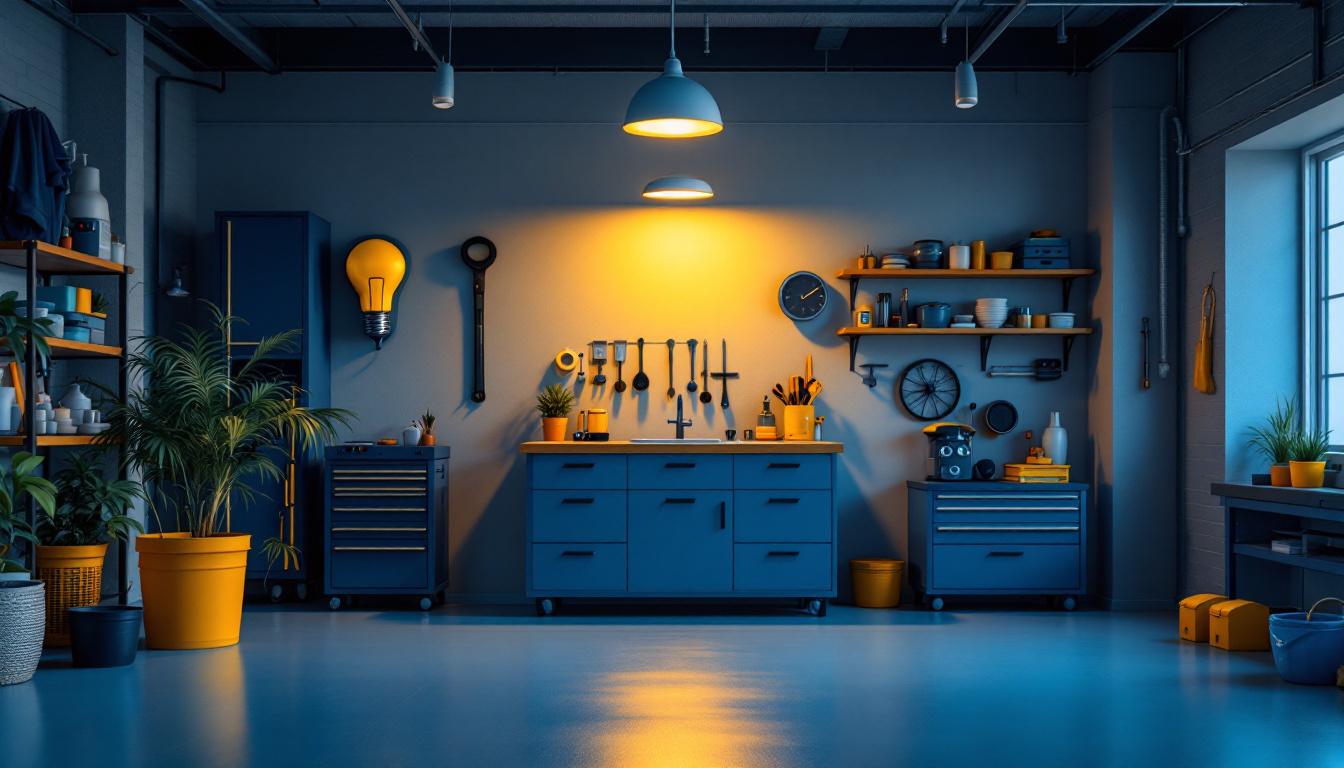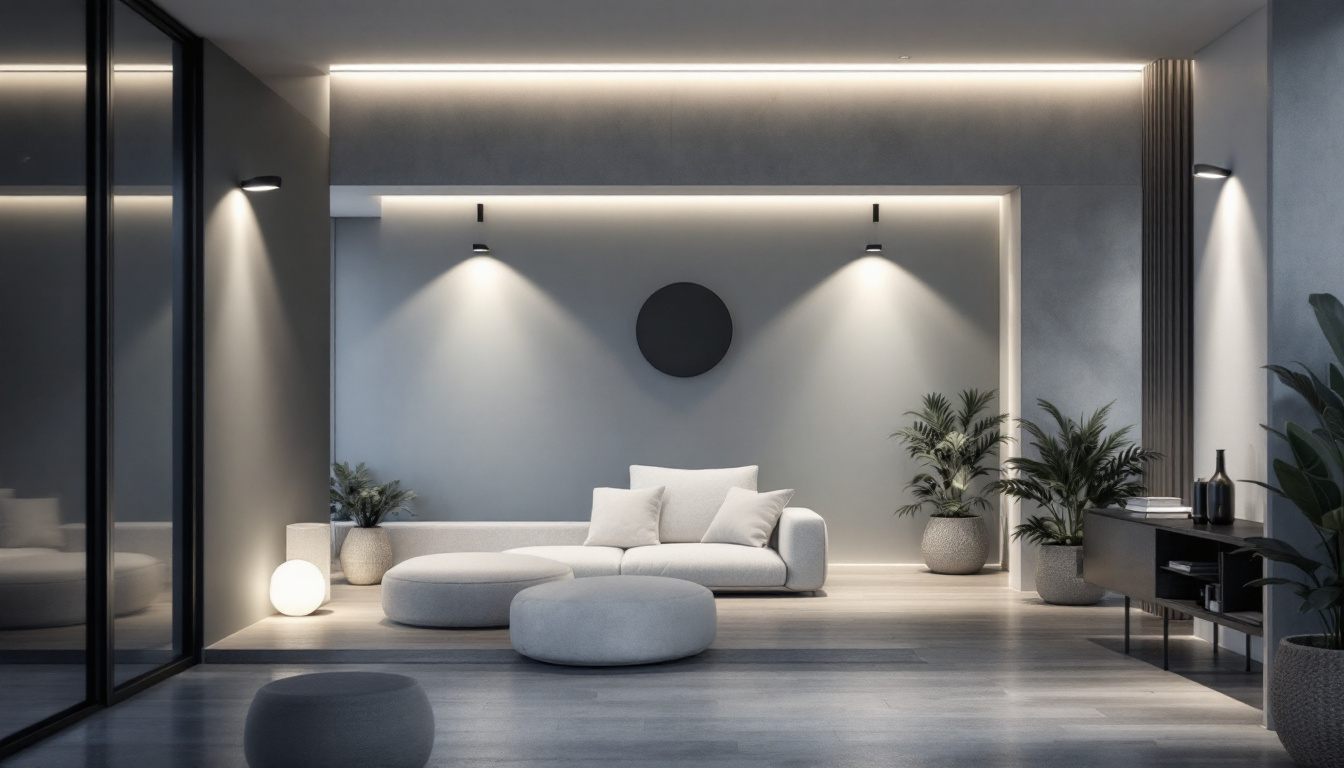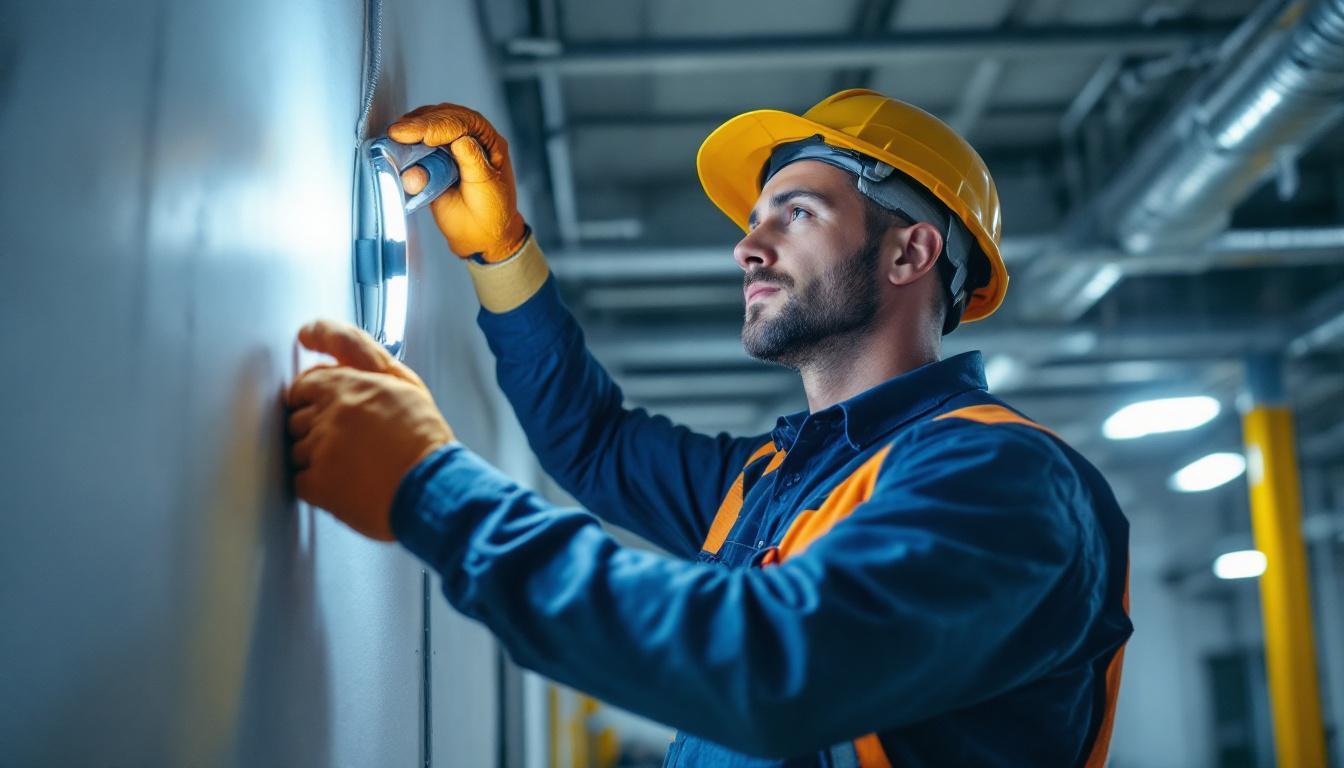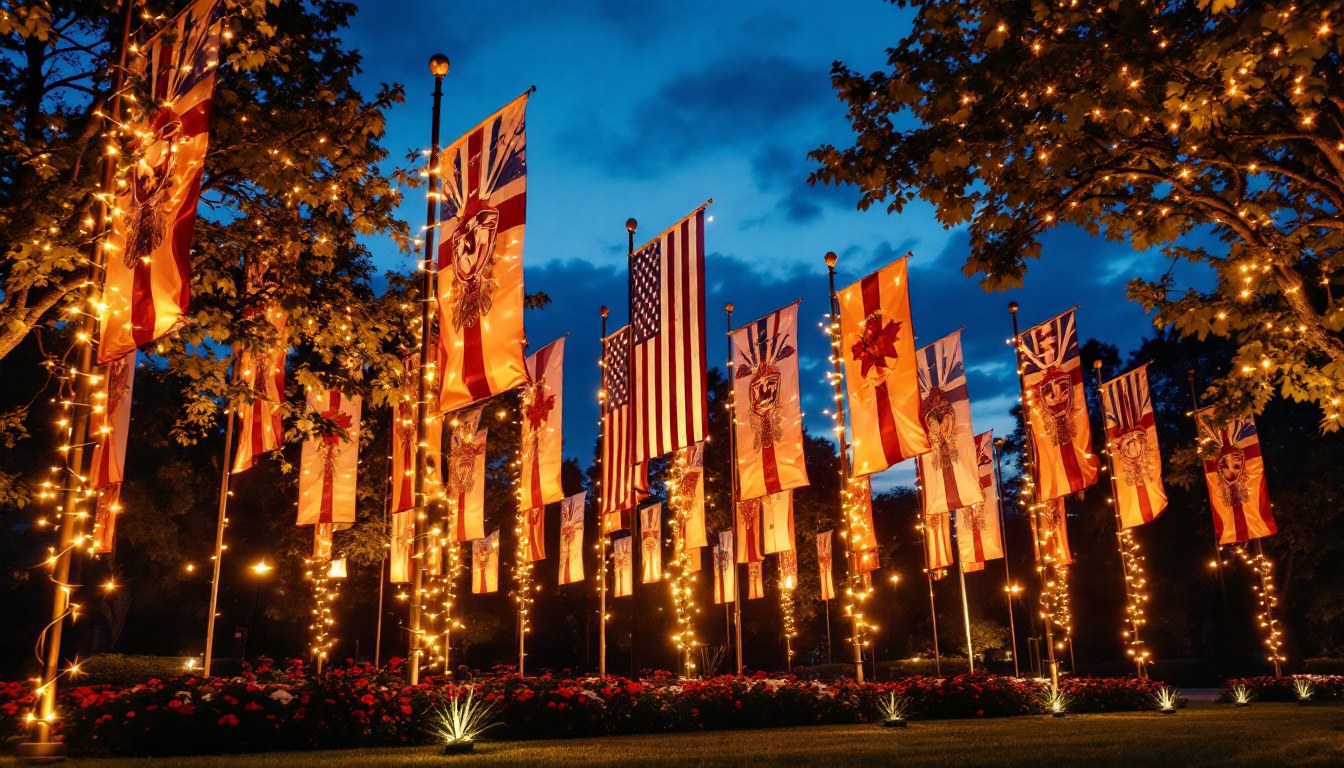
In the ever-evolving world of lighting design, staying ahead of the curve is essential for contractors looking to deliver projects that not only meet current standards but also anticipate future needs. The garage lamp, often overlooked, serves as a perfect case study for how to future-proof lighting projects. This article delves into key considerations and innovative strategies that lighting contractors can employ to ensure their projects remain relevant and efficient in the years to come.
Future-proofing lighting projects involves designing systems that can adapt to technological advancements, changing regulations, and evolving user preferences. This is particularly crucial in spaces like garages, where functionality and versatility are paramount.
With the rapid pace of technological innovation, lighting solutions must be able to integrate new technologies seamlessly. This includes the incorporation of smart lighting systems that can be controlled remotely, adjusted based on occupancy, or even programmed to change according to the time of day. By choosing fixtures that are compatible with smart home ecosystems, contractors can provide clients with a level of convenience and efficiency that enhances the overall user experience. Furthermore, the integration of sensors and automation can lead to significant energy savings, as lights can be programmed to turn off when the garage is not in use, further promoting sustainability in design.
Regulatory standards in the lighting industry are constantly changing, often in response to environmental concerns and energy efficiency goals. Future-proofing involves staying informed about these regulations and selecting products that not only comply but exceed current requirements. For example, using LED technology not only meets energy efficiency standards but also offers longevity and reduced maintenance costs, making it a smart choice for garage lighting. Additionally, as municipalities implement stricter codes regarding light pollution and energy consumption, contractors who proactively adopt compliant solutions can position themselves as leaders in the industry, attracting environmentally conscious clients and projects.
User preferences can shift dramatically over time, influenced by trends in design, functionality, and sustainability. Contractors should consider the potential for changes in how garages are used—whether as simple storage spaces or multifunctional areas for hobbies and workshops. By providing flexible lighting solutions that can adapt to various activities, contractors can ensure that their projects remain relevant and appealing to clients. Moreover, the rise of DIY culture and home improvement projects has led many homeowners to seek out customizable lighting options that allow them to personalize their spaces. Offering modular lighting systems that can be easily reconfigured or expanded can cater to this demand, ensuring that the garage remains a dynamic and useful part of the home for years to come.
The selection of fixtures plays a critical role in future-proofing any lighting project. For garage applications, it is essential to choose fixtures that are durable, versatile, and energy-efficient.
Garages are often subject to harsh conditions, including temperature fluctuations, dust, and moisture. Selecting fixtures that are rated for these conditions, such as those with IP65 or higher ratings, ensures longevity and reliability. Additionally, fixtures made from robust materials can withstand impacts and resist corrosion, making them ideal for the garage environment.
Energy-efficient lighting solutions, particularly LED fixtures, not only reduce electricity costs but also lower the carbon footprint of the space. When selecting fixtures, contractors should look for products that have high lumen output with low wattage. This not only benefits the environment but also appeals to clients who are increasingly conscious of energy consumption.
Garages can serve multiple functions, from vehicle storage to workshops or even recreational spaces. Choosing versatile fixtures that can be adjusted or repositioned allows for flexibility in lighting design. For instance, track lighting or adjustable LED fixtures can provide targeted illumination where needed, enhancing the functionality of the space.
The integration of smart technology into lighting projects is no longer a luxury but a necessity. Smart lighting systems offer numerous benefits, including enhanced control, energy savings, and increased convenience.
Smart lighting solutions allow users to control their garage lights remotely via smartphones or voice-activated devices. This capability not only adds convenience but also enhances security, as homeowners can program lights to turn on or off at specific times, deterring potential intruders. Automation features can also adjust lighting based on occupancy, ensuring that lights are only on when needed.
Future-proofing involves ensuring that lighting systems can integrate with other smart home technologies. For example, linking garage lighting to security systems or smart thermostats can create a cohesive and efficient home environment. This integration can enhance user experience and streamline operations, making it a valuable selling point for contractors.
As technology continues to advance, the ability to scale lighting systems becomes increasingly important. Contractors should select smart lighting solutions that can be easily expanded or upgraded. This might include systems that allow for the addition of more fixtures or the integration of new technologies as they become available, ensuring that the lighting solution remains cutting-edge.
As sustainability becomes a central focus in construction and design, energy management in lighting projects is critical. Future-proofing involves not only selecting energy-efficient products but also implementing strategies that promote long-term sustainability.
Energy monitoring systems can provide valuable insights into energy consumption, helping homeowners understand their usage patterns and identify opportunities for savings. By incorporating these systems into garage lighting projects, contractors can empower clients to make informed decisions about their energy consumption, ultimately leading to reduced costs and environmental impact.
In addition to energy-efficient lighting, the use of sustainable materials in fixtures and installations is essential. Contractors should seek out products that are made from recycled or environmentally friendly materials, as well as those that are designed for easy recycling at the end of their life cycle. This commitment to sustainability can enhance the appeal of lighting projects to eco-conscious clients.
Future-proofing lighting projects also involves encouraging clients to adopt energy-saving behaviors. This can be achieved through education about the benefits of using natural light, turning off lights when not in use, and utilizing timers or sensors. By fostering a culture of sustainability, contractors can help clients maximize the benefits of their lighting systems.
Effective garage lighting design goes beyond simply choosing fixtures. It requires a thoughtful approach that considers the unique needs of the space and its users.
A layered lighting approach combines ambient, task, and accent lighting to create a well-rounded illumination scheme. Ambient lighting provides general illumination, while task lighting focuses on specific areas, such as workbenches or storage. Accent lighting can highlight architectural features or decorative elements. This approach not only enhances functionality but also contributes to the overall aesthetic of the garage.
Providing adjustable lighting levels allows users to customize the brightness according to their needs. Dimmable fixtures or smart lighting systems can enable users to create the perfect atmosphere, whether they are working on a project or hosting a gathering. This flexibility is a key aspect of future-proofing, as it accommodates changing activities and preferences.
The color temperature of garage lighting can significantly impact the functionality and mood of the space. Warmer temperatures (around 2700K to 3000K) create a cozy atmosphere, while cooler temperatures (4000K to 5000K) are better suited for task-oriented activities. By offering a range of color temperature options, contractors can ensure that the lighting meets the diverse needs of users.
Educating clients about the benefits of future-proofing their garage lighting projects is essential for ensuring satisfaction and long-term success. Engaging clients in the decision-making process fosters a sense of ownership and investment in the project.
When discussing lighting options with clients, it’s important to present a range of choices along with their respective benefits. This includes explaining the advantages of energy-efficient fixtures, smart technology, and sustainable materials. Providing clear and concise information empowers clients to make informed decisions that align with their values and preferences.
Involving clients in the design process can lead to more successful outcomes. By soliciting their input on lighting preferences, styles, and functionalities, contractors can tailor solutions that meet their specific needs. This collaborative approach not only enhances client satisfaction but also strengthens the contractor-client relationship.
Once the project is complete, providing clients with information on maintenance and support is crucial for ensuring the longevity of the lighting system. This may include guidance on bulb replacement, troubleshooting smart technology, and tips for maximizing energy efficiency. By offering ongoing support, contractors can build trust and encourage clients to return for future projects.
Future-proofing lighting projects, particularly in spaces like garages, requires a comprehensive approach that considers technology, design, sustainability, and client engagement. By selecting durable, energy-efficient fixtures, incorporating smart technology, and emphasizing sustainable practices, contractors can deliver solutions that not only meet current needs but also anticipate future demands. Engaging clients throughout the process ensures that their unique preferences are addressed, leading to successful outcomes and lasting satisfaction. As the lighting industry continues to evolve, embracing these strategies will position contractors for success in an increasingly competitive market.
Ready to elevate your lighting projects and stay ahead of the curve? At LumenWholesale, we provide contractors with the cutting-edge, spec-grade lighting solutions needed to future-proof every space, including garages. Our extensive selection of high-quality fixtures is designed to meet the highest industry standards, ensuring durability, energy efficiency, and smart technology integration. Say goodbye to inflated markups and hello to unbeatable wholesale prices, free shipping, and the convenience you deserve. Take the first step towards a brighter future and discover wholesale lighting at the best value today with LumenWholesale.

Explore how Securitying Lights are revolutionizing modern lighting solutions with advanced technology, energy efficiency, and enhanced safety features.

Discover the pitfalls lighting contractors often face when dealing with wholesale LED lights.

Discover the pivotal role of LED fixtures in modern lighting installations.

Discover the transformative power of solid flag lighting in your design projects.